FiltersFilter & Sort
All-in-One Cucumber Garden Variety Pack
$2999 USDUnit price /UnavailableDescription
All-in-One Cucumber Variety Pack includes an assortment of our most popular cucumber varieties. Seeds are all individually packaged.
Includes all of the following varieties:

1. Ashley Cucumbers
-
The cucumber Ashley plant produces excellent yields of 8" long pale green cucumbers. Excellent slicing variety. Perfect for home gardeners and market growers. Grows as a vine. Perfect for raised beds.

2. Boston Pickling Cucumbers
-
This popular picking variety produces smooth, bright-green, 3" fruits with black spines. Grows continually if kept picked.

3. Chinese Snake Cucumbers
-
The Chinese Snake (Curved) cucumber produces fruits that are smooth, dark-green with white spines. The curved fruits grow to about 15" to 18" long.

4. Homemade Pickling Cucumbers
-
The Homemade Pickles cucumber is one of the best cucumber varieties you can grow to make your own home-grown pickles.

5. Lemon Cucumbers
-
The Lemon Cucumber is a very popular and rare Heirloom variety that resembles a bright yellow lemon.
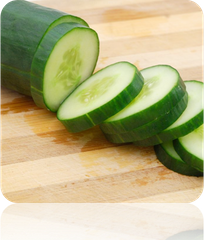
6. Marketer Cucumbers
- The Marketer cucumber is a popular All-America Selections (AAS) Winner! Produces extremely flavorful 9" long dark green cucumbers.

7. Markemore Cucumbers
-
Marketmore cucumbers are a very popular and productive cucumber variety. Fruits grow 8"-9" long and 2" across. Smooth and dark green skin. This is one of our best selling cucumber varieties. Easy to grow. Excellent flavor.
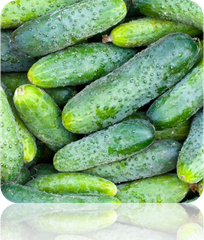
8. National Pickling Cucumber
-
The National Pickling cucumber is an extremely prolific, old-fashioned cucumber variety. Extremely popular cucumber variety. Produces 6" long, medium green, with black spines.

9. Spacemaster Cucumbers
-
The Spacemaster cucumber gets its name for that very reason ... It's the perfect cucumber variety for gardeners that want to grow cucumbers in limited space.
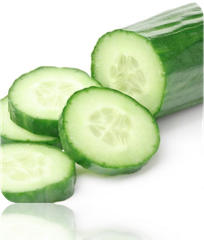
10. Straight Eight Cucumbers
- The Straight Eight cucumber variety is a popular heirloom type of cucumber ideal for slicing and/or for eating fresh right off the vine.

11. Tendergreen Burpless Cucumbers
-
The Tendergreen Burpless cucumber variety is extremely sweet and tender. Produces medium sized green fruits. Pick when they grow to 8".

12. White Wonder Cucumbers
- Rare heirloom cucumber variety. Produces beautiful white cucumbers about 6" long x 2" thick. Heat tolerant. Excellent variety for any sized backyard garden, raised beds, or containers. Looks and tastes amazing.
Follow SeedsNow.com's board Cucumbers on Pinterest. -
The cucumber Ashley plant produces excellent yields of 8" long pale green cucumbers. Excellent slicing variety. Perfect for home gardeners and market growers. Grows as a vine. Perfect for raised beds.
All-in-One Lettuce & Leafy Greens Variety Pack
$3999 USDUnit price /UnavailableDescription
All-in-One Lettuce & Greens Variety Pack includes an assortment of our 15 most popular varieties. Seed are all individually packaged. Packaged with zip-lock Mylar bag system for long-term storage and maximum seed protection. Includes all of the following 15 varieties:
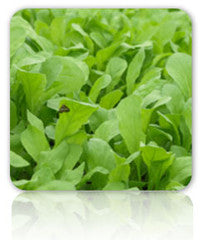
1. Arugula - Classic Roquette (Appx. 150 seeds)
- Arugula can usually be harvested as early as 30-40 days after planting. The leaves of the Arugula plant add a tangy/peppery flavor to any meal. This Arugula variety is an easy-to-grow green. Plant in the spring and again in the fall. Arugula is one of the easiest leafy greens you can grow.
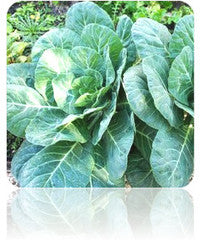
2. Collard - Traditional Georgia Southern (Appx. 50 seeds)
- This is the traditional Collard Green variety popularly grown in the south. Produces large yields of dark blue-green cabbage-like leaves Tolerates heat, humidity, and poor soil conditions.
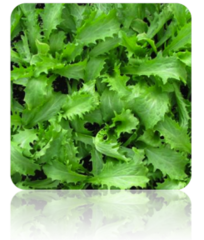
3. Endive - Green Curled (Appx. 100 seeds)
- Endive is a healthy and delicious leafy green. The Green Curled Endive plant produces dark green curly leaves with large tender crisp ribs. Excellent salads and sandwiches. Also good boiled or steamed Extremely easy to grow Endive is rich in many vitamins and minerals, especially in folate and vitamins A and K, and is high in fiber.

4. Kale - Blue Curled Scotch (Appx. 50 seeds)
- The Blue Curled Scotch is an early Kale variety which will produce tasty greens! Excellent in salads or steamed. The blue-green leaves are finely curled and reach up to 12-15" tall! Can handle the cold extremely well. One of the best frost resistant kale varieties available.

5. Kale - Red Russian (Appx. 50 seeds)
- Stems are purple with deep gray-green leaves. The plants mature medium-tall and leaves are tender compared to other kale varieties. Ideal for salads and light cooking. This variety is excellent producer in cooler growing seasons.

6. Lettuce - All Year Round (Appx. 200 seeds)
- As its name suggests, this is a lettuce that can be gown throughout the year. In even some of the the coldest areas across the country, this variety can be grown with some protection with a cloche or cold frame in the cooler months.

7. Lettuce - Gourmet/Mesclun Mix (Appx. 200 seeds)
-
A mixture of favorite lettuce seed varieties from across the spectrum of lettuce types. Plant heavy and start harvest early for young for baby greens then allow some to grow on for plenty of variety for salads. A great way to get a lot out of little space. Perfect for container gardening.

8. Lettuce - Iceberg (Appx. 200 seeds)
- A classic lettuce variety. Iceberg lettuce is most often grown as a leaf vegetable. Mild in flavor, it has been described over the centuries as a cooling counterbalance to other ingredients in a salad. Perfect for burgers and other culinary creations.

9. Lettuce - Classic "Paris Island Cos" (Appx. 135 seeds)
- Large, upright, full-bodied heads with dark-green, slightly savoyed leaves that are mild and sweet. Plant reaches about 10 inches tall. Midribs are crunchy and juicy. Because of their higher chlorophyll content, romaine lettuces are among the most nutritious of all lettuces. Excellent performer in the inter-mountain region. Mosaic tolerant.
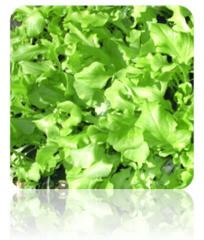
10. Lettuce - Salad Bowl, Green (Appx. 150 seeds)
- The Green Salad Bowl Mix is a really easy-to-grow lettuce variety. Extremely flavorful green leafs. Continues to grow as picked. As outer leaves are picked, inner leaves keep growing. Excellent addition for salads and garnishes

11. Lettuce - Salad Bowl, Red (Appx. 150 seeds)
- The Red Salad Bowl Mix is a really easy-to-grow lettuce variety. Extremely flavorful red leafs. Continues to grow as picked. As outer leaves are picked, inner leaves keep growing. Excellent addition for salads and garnishes.

12. Lettuce - Tom Thumb (Appx. 180 seeds)
- The tom thumb lettuce produces a small, round head with delicate yet delicious leaves. This variety can be planted close together. Ideal for small spaces. Grows well in containers on a patio or windowsill.

13. Mustard - Mizuna (Appx. 50 seeds)
- The Mizuna mustard is a vigorous grower, which produces numerous stalks bearing dark green, deeply cut and fringed leaves. They have a fresh, crisp taste and can be used on their own or cooked with meat. This mustard variety is highly resistant to cold and grows well during the winter months.

14. Mustard - Tendergreen (Appx. 50 seeds)
- A traditional Southern favorite. Plant produces good yields of green mustard leaves. Excellent flavor. Makes a great garnish to any dish. Easy to grow.
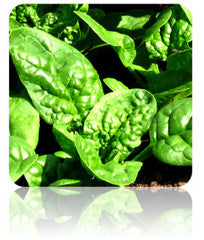
15. Spinach - Bloomsdale (Appx. 70 seeds)
- Bloomsdale Spinach will produce heavy, glossy, dark green leaves. Excellent flavor. Extremely easy to grow. Large, curly dark green leaves. Nice sweet taste.
All-in-One Pepper Garden Variety Pack
$3999 USDUnit price /UnavailableDescription
All-in-One Hot & Sweet Pepper Variety Pack includes an assortment of our most popular varieties. Seeds are all individually packaged. Packaged with zip-lock bag system for long-term storage and maximum seed protection.Includes all of the following varieties:
1. Anaheim Chili
- Appx. 10 seeds
- The Anaheim Chili Pepper is really quite mild. About one kick up from a bell pepper. This California native is called Hatch when grown in New Mexico and Seco del Norte when dried. Loads of long 6"-10" tapered peppers ripen from grassy green to forest to smoky red. Thick-skinned and fleshy, tangy and sweet, tasty when fresh or cooked into meat. Try chiles rellenos or corn chowder, or make it Seco and grind into powder.
2. Ancho Grande
- Appx. 10 seeds
- The Ancho Grande Pepper is named for its size—ancho is wide, grande is big. That’s when it’s dark red. While it’s still dark green, it’s called Poblano, which is named for a town in Mexico. And when it matures fully to dark brown, the name is Mulato. Vigorous, leafy plants produce grande amounts of tapered heart-shaped 4"-8" fruit with a mellow, smoky flavor and a little bit of heat. This fleshy, thick-skinned pepper is traditionally used for chiles rellenos and mole sauce, but you can probably think of a few more uses while you’re studying for the quiz about its name.
3. Pretty Purpl5
- Appx. 10 seeds
- The Big Jim Pepper is the world’s largest pepper variety, with a fruit that can grow to 14" or longer. Typically in the 6"-10" range, these wide, tapered summer icicles grow on compact plants and ripen from lime green to smoky crimson. Sweet and flavorful with a pleasurable crackle of heat. When roasted or grilled, the thick skin slips off easily, leaving tender, juicy, meaty flesh. If you do grow a Jim that needs a tape measure, fill one full of ham and havarti or crab and cream cheese, and feed your entire family plus a neighbor kid.
4. California Wonder Bell Pepper
- Appx. 10 seeds
- The California Wonder Pepper is so easy-going, it doesn’t mind if you call it Cal Wonder. Sturdy plants produce lots of smooth, blocky 3"-4" fruits with mostly four lobes and thick skin that ripen from peace, man green ✌️ to groovy orange to right-on red. Juicy and crunchy with sweet, mild flavor, and no heat. Eat fresh or stuff with chicken and avocado for a wonderful easy lunch.
5. Cayenne Long Thin Red
- Appx. 10 seeds
- The Red Cayenne Pepper will put a hop, a skip, and a kick in your step. Slender, glossy 5"-6" fruits grow abundantly on strong plants, bounding through all the primary colors as it matures from green to yellow to orange to red. Primarily used as a dried spice, but can be used fresh to rev up a salsa or to make pickling brine howl.
6. Caloro, Yellow Jalapeno
- Appx. 10 seeds
- The Caloro Pepper is a gilded name for the Yellow Jalapeño Pepper. If you grow these, it will help to have two things: lots of friends and lots of bags, because you are going to have lots of these hot peppers to share. This prolific plant produces 2"-3" tapered fruits continuously, all summer long, maturing from yellow to orange to red. Continuously. Yellow, orange, red. All summer long. Yellow, orange, red. Thick-skinned, sweet, and crunchy with a heat that’s milder than a Green Jalapeño, but still quite spicy. Yellow, orange, red. Continuously, all summer long.
7. Classic Green Jalapeno
- Appx. 10 seeds
- We’re not sure if the Jalapeño Pepper knows it, but this stocky little spark plug is one of the most famous and popular hot peppers in the world. At 7,500 SHUs, it sits at the lower end of the Scoville heat scale, which is hot enough to ignite your tongue, but not so hot you won’t take another bite. Prolific yields ensure a steady harvest of 3" glossy fruits that ripen from dark green to fiery red. In some countries, if it’s not illegal to make salsa with any other pepper, it’s at least frowned upon. Best not chance it.
8. Habenero - Red Caribbean
- The sweet, citrusy flavor, tropical fragrance, and lush green foliage of the Red Caribbean Habanero will remind you of a beach vacation. And so will the searing heat! Produces loads of small 1"-2" wrinkled fruits that twinkle in colors ranging from key lime green to sunrise yellow to sunset orange to sunburn red. Use it to make some haba-haba salsa, broiled halibut with charred pepper cream sauce, or spicy pineapple ice cream.
9. Banana
- Appx. 10 seeds
- Yellow, yellow, bo bellow, banana fana fo fellow…. The Yellow Banana Pepper is one of the mildest and most popular sweet peppers in America. When young, it is pale yellow, crunchy, sweet, and me my mo mellow enough for a youngster to eat. As it ripens from orange to red, it becomes softer and sweeter. Flavorful at any stage of growth, so pick one when you want one. Especially good pickled, but save a few to stuff or stir fry. Yell-ow!
10. Red Hot Cherry
- Appx. 15 seeds
- A Red Cherry type variety that grows into a bushy plant up to 3 feet tall. Higher heat levels than other Hot Cherry peppers. Has a nice robust flavor. Very easy to grow. Pods ripen to a Cherry Red color and get up to over 1 inch in diameter.
11. Santa Fe Grande
- Appx. 10 seeds
- The Santa Fe Grande Pepper is heat-tolerant, prolific, and cheerful. Produces a fiesta of 2"-4" waxy, tapered peppers that ripen through the rich, vibrant colors of the Southwest, from pale green to yellow to orange to red, with sweet, mild flavor and mild heat. So mild, it’s also called Chile Guero, which translates to “blonde chili,” but you might bite into a spicier one here and there. Grill them with onions for a festive topping for chicken or beef, or use as the colorful main ingredient in salsa or a pickle jar.
12. Serrano Tampiqueno
- Appx. 35 seeds
- The Serrano Tampiqueño Pepper “from the mountains” of Mexico opens up new vistas of heat and flavor. The prolific plant tolerates heat and drought, pushing out loads of 2"-3" cylindrical fruits with colors that range from from grassy green to fizzy orange to berry red, and are spicy at every mesa. Use to add flavor, heat, and syllables to pizza tampiqueño, salsa tampiqueño, steak tampiqueño, or pickles tampiqueño, or dry them and tampi into a queño.
13. Hungarian Wax
- Appx. 10 seeds
- Zippy and snappy, the Hungarian Hot Wax Pepper offers a little sweet and a little heat, producing loads of peppers earlier than other varieties. Long 6" tapered fruit ripens from green to creamy yellow, which is when it’s just getting zippy. If you leave it be, it will keep going to orange and then red, increasing the heat with each color change. Thin-skinned, meaty, and crunchy. Try pickling in apple cider vinegar, frying up with onions to top an omelet, or stuffing with prosciutto and provolone.
14. Chocolate Bell Pepper
- Appx. 10 seeds
- The Chocolate Bell Pepper is a fun one to grow. While the skin is maturing from green to brown, the inside is ripening from green to red, so you’re in for a surprise color combo with each one you snip off the vine. Crunchy and sweet with no heat. Ripens early, too.
Asparagus (Crowns/Roots) - Jersey Knight (Organic)
From $399 USDUnit price /UnavailableDescription
Organic/F1 Hybrid
The top name in Jersey male asparagus. Phenomenal yields, excellent quality and disease resistant. Dark green spears with purple bracts. Shoot tips hold tighter than other varieties allowing for an extended harvest period.
⚠️ These crowns are 2-year-old bare roots that are all male, which means possibly higher (3-4 times) yields.
CROWN PLANTING TIPS
- Botanical name: Asparagus officinalis
- Depth to plant crowns: 6"-8" deep
- Spacing between plants: 14"-18" apart
- Spacing between rows: 4'-5' apart
- Preferred temps: When daytime temps exceed 75F–85F
- Soil needs: 6.0-7.0 pH
- Sun needs: Full sun, partial shade
- Frost hardy: No
- Planting season: Spring, fall
- # of plants per sq. ft.: Appx. 1 plant per sq. ft.
- Days to maturity: 730 days
ADDITIONAL PLANT INFORMATION
Health Benefits of Asparagus
Asparagus contains high levels of beta carotene and other vitamins and minerals, and is a great diuretic. Need more fiber? Chew on some asparagus. And if you're looking for help controlling diabetes or preventing kidney stones, plant and eat more asparagus.Ways to Eat Asparagus
Asparagus is delicious raw or marinated in a little olive oil, lemon juice, and salt. You can also boil, steam, grill, roast, or sauté the spears. Add some asparagus to your other favorite foods such as soups, risottos, lasagnas, and quiches. To preserve your harvest, can up a few jars of pickled asparagus.• Shop all Asparagus (seeds)
• Shop all Asparagus (roots)
Shop Good Companion Plants for Asparagus 📚 Grow Guide: Asparagus Roots Asparagus (Crowns/Roots) - Millennium
From $499 USDUnit price /UnavailableDescription
Asparagus plants are perennials that can easily produce for 20+ years, so give this vegetable a permanent and sunny spot in your garden. To ensure many years of future production, wait until the second year to cut and consume the spears.
⚠️ F1 Hybrid - These crowns are 2-year-old bare roots that are all male, which means possibly higher (3-4 times) yields. The Millennium Asparagus is an F1 hybrid variety developed in Canada.
- Cold hardy, but protect from frost
- Easy to care for, once established
- Beautiful fern-like foliage lingers after harvest
- Best adapted to heavier soils
CROWN PLANTING TIPS
- Botanical name: Asparagus officinalis
- Depth to plant crowns: 6"-8" deep
- Spacing between plants: 14"-18" apart
- Spacing between rows: 4'-5' apart
- Preferred temps: When daytime temps exceed 75F–85F
- Soil needs: 6.0-7.0 pH
- Sun needs: Full sun, partial shade
- Frost hardy: No
- Planting season: Spring, fall
- # of plants per sq. ft.: Appx. 1 plant per sq. ft.
- Days to maturity: 730 days
Health Benefits of Asparagus
Asparagus contains high levels of beta carotene and other vitamins and minerals, and is a great diuretic. Need more fiber? Chew on some asparagus. And if you're looking for help controlling diabetes or preventing kidney stones, plant and eat more asparagus.Ways to Eat Asparagus
Asparagus is delicious raw or marinated in a little olive oil, lemon juice, and salt. You can also boil, steam, grill, roast, or sauté the spears. Add some asparagus to your other favorite foods such as soups, risottos, lasagnas, and quiches. To preserve your harvest, can up a few jars of pickled asparagus.• Shop all Asparagus (seeds)
• Shop all Asparagus (roots)
Shop Good Companion Plants for Asparagus 📚 Grow Guide: Asparagus Roots - Cold hardy, but protect from frost
Asparagus (Crowns/Roots) - Purple Passion
From $499 USDUnit price /UnavailableDescription
Some say Purple Passion Asparagus is the best variety. This variety produces beautiful dark purple spears that are sweeter than standard green varieties. Asparagus plants are perennials that can easily produce for 20+ years, so give this vegetable a permanent and sunny spot in your garden. To ensure many years of future production, wait until the second year to cut and consume the spears.
⚠️ F1 Hybrid - These crowns are 2-year-old bare roots that are all male, which means possibly higher (3-4 times) yields.
- Vigorous grower
- Sweet and tender
- Heat tolerant
- Cold hardy, but protect from frost
CROWN PLANTING TIPS
- Botanical name: Asparagus officinalis
- Depth to plant crowns: 6"-8" deep
- Spacing between plants: 14"-18" apart
- Spacing between rows: 4'-5' apart
- Preferred temps: When daytime temps exceed 75F–85F
- Soil needs: 6.0-7.0 pH
- Sun needs: Full sun, partial shade
- Frost hardy: No
- Planting season: Spring, fall
- # of plants per sq. ft.: Appx. 1 plant per sq. ft.
- Days to maturity: 730 days
Health Benefits of Asparagus
Asparagus contains high levels of beta carotene and other vitamins and minerals, and is a great diuretic. Need more fiber? Chew on some asparagus. And if you're looking for help controlling diabetes or preventing kidney stones, plant and eat more asparagus.Ways to Eat Asparagus
Asparagus is delicious raw or marinated in a little olive oil, lemon juice, and salt. You can also boil, steam, grill, roast, or sauté the spears. Add some asparagus to your other favorite foods such as soups, risottos, lasagnas, and quiches. To preserve your harvest, can up a few jars of pickled asparagus.• Shop all Asparagus (seeds)
• Shop all Asparagus (roots)
Shop Good Companion Plants for Asparagus 📚 Grow Guide: Asparagus Roots Asparagus - Mary Washington (Seeds)
From $499 USDUnit price /UnavailableDescription

The Mary Washington Asparagus is a popular old heirloom variety that produces vigorous, uniform spears with a sweet, nutty flavor. Asparagus plants are perennials that can easily produce for 20+ years, so give this vegetable a permanent and sunny spot in your garden. To ensure many years of future production, wait until the second year to cut and consume the spears.
- Early producer
- Cold hardy, but protect from frost
- Easy to care for, once established
- Beautiful fern-like foliage lingers after harvest
Asparagus can be considered a power food among veggies. It is packed with vitamins and minerals, delivering a more complete balance than any other. Asparagus is a good source of vitamin A, B6 and C, as well as iron, potassium, riboflavin, niacin, and thiamine. It is high in fiber and low in carbohydrates, contains no fat, no cholesterol and has only 20 calories per 1/2 cup serving.
An established bed of 25 asparagus plants will produce about 10 pounds of asparagus per year.
• Shop all Asparagus (seeds)
• Shop all Asparagus (roots)
Shop Good Companion Plants for Asparagus 📚 Grow Guide: Asparagus - From $499 USDUnit price /Unavailable
Description
Let us tell you about Lettuce Leaf Basil. It’s a lovely Italian basil that grows huge leaves as big as your hand, with a flavor that’s sweeter and less spicy than other basils. Its crinkles hold onto dressing in salads, you need only one leaf for a sandwich or wrap, and you can use the rest as you would any other basil. Save the edible flower spikes to garnish seafood dishes and cocktails.Harvest the leaves and stems from the top part of the plant, and pinch off edible flower buds as they appear, which prevents the leaves from turning bitter, and signals the plant to branch out and grow more leaves, making a bushier plant. The more you harvest, the more it grows!
- Sweet and mild
- Huge 5"-6" leaves
- Grows 1'-2' tall
- Good for containers
- Tons of medicinal benefits!
As a medicinal herb, Basil has been used internally to treat anxiety, colds, colic, cough, depression, diarrhea, fever, flatulence, flu, indigestion, insomnia, intestinal parasites and worms, exhaustion, gastric pain, gonorrhea, lactation problems, migraine headache, nausea, stomach cramps, sore throat, and vomiting, and externally to treat acne, insect bites and stings, loss of smell, skin problems, snake bites.
⚠️ Do not use medicinally while pregnant.
⚠️ Medicinal properties are presented as information only, and are not a recommendation or prescription for use. Consult a medical professional before using any herb medicinally.
As a companion plant, Basil attracts hummingbirds, pollinators, and beneficial insects, and repels asparagus beetles, cabbage moths, cabbage white butterfly, cabbage worms, carrot rust fly, flies, maggots, mice, mosquitoes, spider mites, thrips, and tomato hornworms.
Shop all Basil Seeds Shop Good Companion Plants for Basil 📚 Grow Guide: Basil
Health Benefits of Genovese Basil
Basil is a known health tonic for expecting mothers and when mixed with tea it increases lactation in mothers. It is also a nerve tonic and young children are sometimes encouraged to chew on the leaves of basil because it stimulates brain cells and can increase memory.

See Basil Recipes & Growing Tips on our Pinterest Board
Shop all Basil Seeds Shop Good Companion Plants for Basil 📚 Grow Guide: Basil Bean - Jicama/Mexican Yam Bean
From $099 USDUnit price /UnavailableDescription
Jicama - Mexican Yam Bean
- Pachyrhizus erosus, commonly known as jicama, Mexican yam bean, or Mexican turnip, is the name of a native Mexican vine, although the name most commonly refers to the plant's edible tuberous root. (source/wikipedia)
- Grows as a large vine.
- Day to Maturity | 80 days
-
Best Months to Plant | [April - June] Beans like sun and water. Give them lots of it and they'll grow fast.
-
Pole Beans | Beans can be grown in average soil, almost anywhere in the United States. Set 3 rough barked, 6 foot poles in the ground, tepee fashion, and tie together at the top
Click here for complete Pole Bean grow guide
- Pachyrhizus erosus, commonly known as jicama, Mexican yam bean, or Mexican turnip, is the name of a native Mexican vine, although the name most commonly refers to the plant's edible tuberous root. (source/wikipedia)
- From $399 USDUnit price /Unavailable
Description

The Blue Lake Bush Bean (Phaseolus vulgaris) produces tender stringless pods that grow 5"-6" long. It's easy to grow and matures quickly. Excellent flavor with firm texture and rich colors. Beans mature all at once, making it an easy harvest.
- Stringless pods
- Easy to grow
- Matures quickly—55 days
- Medium 5"-6" pods
Shop all Bean Seeds Shop Good Companion Plants for Beans 📚 Grow Guide: Beans - From $399 USDUnit price /Unavailable
Description

The Borlotti Bush Bean (Phaseolus vulgaris) is an old Italian heirloom, also known as the Cranberry Bean. With its vibrant crimson streaks, the beautiful pods are easy to spot in the garden. Can be eaten as a green bean, or dried and used like its relative the kidney bean.
- Easy to grow
- High in fiber
- Matures quickly—55 days
- Good as a dried bean
Shop all Bean Seeds Shop Good Companion Plants for Beans 📚 Grow Guide: Beans - From $299 USDUnit price /Unavailable
Description

The Contender Bush Bean (Phaseolus vulgaris) is one of the best tasting green beans, and it can tolerate the heat. An early and prolific producer, pods can grow 6"-8" long, and are slightly curved with a distinct flavor. This stringless variety is great for canning, freezing, or eating fresh from the garden.
- Easy to grow
- Stringless variety
- Matures quickly—50 days
- Heat tolerant
Shop all Bean Seeds Shop Good Companion Plants for Beans 📚 Grow Guide: Beans Bean, Bush - Edamame Soybean, Midori Giant (Soy Bean)
From $199 USDUnit price /UnavailableDescription
If you enjoy going to Japanese restaurants or eating sushi, then you have probably eaten these beans cooked fresh or as tofu. The Midori Giant Edamame Soy Bean produces high yields of large 3" pods, with flavor best described as sweet, nutty, and buttery. You can cook the beans in their pods or shell them and use them fresh in any recipe.
- Easy to grow
- Large, high-yielding pods and beans
- Sweet flavor
- Grown just like green beans
SEED PLANTING TIPS
- Botanical name: Glycine max
- Depth to plant seeds: 1" deep
- Spacing between plants: 3"-4" apart
- Spacing between rows: 18"-24" apart
- Days to germinate (sprout): 5-10 days
- Germination soil temps: 65F-90F
- Soil needs: 5.5-7.5 pH
- Sun needs: Full sun
- Frost hardy: No
- Planting season: Spring, summer, fall
- # of plants per sq. ft.: Appx. 4-6 plants per sq. ft.
- Days to maturity: 80-95 days
Good companion plants: Cucumber, Pea, Rosemary, Thyme, Tomato
- From $299 USDUnit price /Unavailable
Description
The Golden Wax Bush Bean is a beautiful buttery treat in the garden. With its long, straight yellow pods, this heavy producing stringless bean is easy to cook or can. Grow these alongside Borlotti Bush Beans and Royal Burgundy Bush Beans for an artistic change from the usual green beans.
- Easy to grow
- Stringless variety
- Produces long 5"-7" pods
- Buttery wax bean flavor
SEED PLANTING TIPS
- Botanical name: Phaseolus vulgaris
- Depth to plant seeds: 1" deep
- Spacing between plants: 4"-6" apart
- Spacing between rows: 18"-24" apart
- Days to germinate (sprout): 10-14 days
- Germination soil temps: 70F-85F
- Soil needs: 6.0-7.0 pH
- Sun needs: Full sun
- Frost hardy: No
- Planting season: Spring, summer, fall
- # of plants per sq. ft.: Appx. 4 plants per sq. ft.
- Days to maturity: 65-75 days
Good companion plants: Cucumber, Pea, Rosemary, Thyme, Tomato
- From $199 USDUnit price /Unavailable
Description
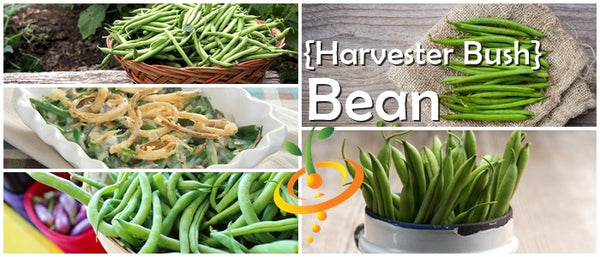
The Harvester Bush Bean grows high off the ground for easy picking. It has excellent flavor from pods that can grow up to 6" long. And you can be enjoying the juicy crunchiness in only 55 days. What’s not to like about this easy string bean?- Easy to grow
- High yielding
- Easy to harvest
- Long, flavorful pods
SEED PLANTING TIPS
- Botanical name: Phaseolus vulgaris
- Depth to plant seeds: 1" deep
- Spacing between plants: 4" apart
- Spacing between rows: 18"-24" apart
- Days to germinate (sprout): 5-10 days
- Germination soil temps: 70F-85F
- Soil needs: 6.0-7.0 pH
- Sun needs: Full sun
- Frost hardy: No
- Planting season: Spring, summer, fall
- # of plants per sq. ft.: Appx. 4 plants per sq. ft.
- Days to maturity: 50-55 days
Good companion plants: Cucumber, Pea, Rosemary, Thyme, Tomato
- From $399 USDUnit price /Unavailable
Description
The Jade Bush Bean produces very sweet, tender 7" pods. These stringless beans grow on a strong plant, high off the ground for quick picking, and their deep green color makes them easy to spot among the leaves. This gem maintains production even in high temperatures.
- Easy to grow
- Stringless variety
- Sweet, tender 7" pods
- Tolerates high temperatures
SEED PLANTING TIPS
- Botanical name: Phaseolus vulgaris
- Depth to plant seeds: 1" deep
- Spacing between plants: 4" apart
- Spacing between rows: 18"-24" apart
- Days to germinate (sprout): 5-10 days
- Germination soil temps: 70F-85F
- Soil needs: 6.0-7.0 pH
- Sun needs: Full sun
- Frost hardy: No
- Planting season: Spring, summer, fall
- # of plants per sq. ft.: Appx. 4 plants per sq. ft.
- Days to maturity: 55-60 days
Click here to view our full Bean grow guide
Good companion plants: Cucumber, Pea, Rosemary, Thyme, Tomato
- From $399 USDUnit price /Unavailable
Description

The Landreth Bush Bean is a classic green bean—lovely medium color, tender 5"-6" stringless pods, and excellent flavor. It’s also an heirloom that has been growing in gardens since the late 1800s. A reliable and heavy producer, this bean is more heat tolerant than other varieties. Tends to grow tall and wide, so give it a little more garden space.
- Easy to grow
- High yields
- Heat tolerant
- Stringless variety
SEED PLANTING TIPS
- Botanical name: Phaseolus vulgaris
- Depth to plant seeds: 1" deep
- Spacing between plants: 4"-6" apart
- Spacing between rows: 18"-24" apart
- Days to germinate (sprout): 5-10 days
- Germination soil temps: 70F-85F
- Soil needs: 6.0-7.0 pH
- Sun needs: Full sun
- Frost hardy: No
- Planting season: Spring, summer, fall
- # of plants per sq. ft.: Appx. 2-4 plants per sq. ft.
- Days to maturity: 50-55 days
Click here to view our full Bean grow guide
Good companion plants: Cucumber, Pea, Rosemary, Thyme, Tomato
- From $299 USDUnit price /Unavailable
Description

The Provider Bush Bean is great for all you impatient gardeners. It germinates in cool soil, so you can direct sow earlier than other beans, and matures in only 50 days. This high-yielding compact plant provides delicious 5"-6" stringless pods with purple beans inside.
- Germinates in cool soil
- Matures quickly—50 days
- Heavy producer
- Stringless variety
SEED PLANTING TIPS
- Botanical name: Phaseolus vulgaris
- Depth to plant seeds: 1" deep
- Spacing between plants: 4" apart
- Spacing between rows: 18"-24" apart
- Days to germinate (sprout): 5-10 days
- Germination soil temps: 60F-85F
- Soil needs: 6.0-7.0 pH
- Sun needs: Full sun
- Frost hardy: No
- Planting season: Spring, summer, fall
- # of plants per sq. ft.: Appx. 4 plants per sq. ft.
- Days to maturity: 50-55 days
Click here to view our full Bean grow guide
Good companion plants: Cucumber, Pea, Rosemary, Thyme, Tomato
- From $299 USDUnit price /Unavailable
Description
The Roma II Bush Bean is an Italian snap bean with flat stringless pods. A tender, meaty bean that retains its fresh flavor when cooked or canned, and is hearty enough to throw on the grill. This high yielder grows tall, making it easy to harvest lots of wide 5"-6" pods.
- Easy to grow
- Tender and flavorful
- Stringless variety
- High yields
SEED PLANTING TIPS
- Botanical name: Phaseolus vulgaris
- Depth to plant seeds: 1.25" deep
- Spacing between plants: 5-6" apart
- Spacing between rows: 18"-24" apart
- Days to germinate (sprout): 5-10 days
- Germination soil temps: 70F-85F
- Soil needs: 6.0-7.0 pH
- Sun needs: Full sun
- Frost hardy: No
- Planting season: Spring, summer, fall
- # of plants per sq. ft.: Appx. 4 plants per sq. ft.
- Days to maturity: 58-65 days
Click here to view our full Bean grow guide
Good companion plants: Cucumber, Pea, Rosemary, Thyme, Tomato
- From $399 USDUnit price /Unavailable
Description
The Royal Burgundy Bush Bean has so many things going for it—colorful, beautiful, tasty, plentiful, long-producing—but the coolest thing is that it grows in cool weather. Dark purple 5"-6" pods produced high on the plant make for a doubly easy harvest. When cooked, watch them change color from royal purple to royal green.
- Easy to grow
- High yields
- Continuous production throughout growing season
- Grows in cool weather
SEED PLANTING TIPS
- Botanical name: Phaseolus vulgaris
- Depth to plant seeds: 1" deep
- Spacing between plants: 4" apart
- Spacing between rows: 18"-24" apart
- Days to germinate (sprout): 5-10 days
- Germination soil temps: 70F-85F
- Soil needs: 6.0-7.0 pH
- Sun needs: Full sun
- Frost hardy: No
- Planting season: Spring, summer, fall
- # of plants per sq. ft.: Appx. 4 plants per sq. ft.
- Days to maturity: 50-55 days
Click here to view our full Bean grow guide
Good companion plants: Cucumber, Pea, Rosemary, Thyme, Tomato
- From $299 USDUnit price /Unavailable
Description
The Slenderette Bush Bean is a sleek French-type green bean. A vigorous grower that produces high yields of slim 5" long stringless pods on a compact plant. This sweet, juicy, tender, crunchy bean would taste great in a European thin/thick bean salad served alongside wider Roma II Italian beans.
- Easy to grow
- Stringless variety
- Sweet, juicy, tender, and crunchy
- High yields
SEED PLANTING TIPS
- Botanical name: Phaseolus vulgaris
- Depth to plant seeds: 1" deep
- Spacing between plants: 4" apart
- Spacing between rows: 18"-24" apart
- Days to germinate (sprout): 5-10 days
- Germination soil temps: 70F-85F
- Soil needs: 6.0-7.0 pH
- Sun needs: Full sun
- Frost hardy: No
- Planting season: Spring, summer, fall
- # of plants per sq. ft.: Appx. 4 plants per sq. ft.
- Days to maturity: 50-55 days
Click here to view our full Bean grow guide
Good companion plants: Cucumber, Pea, Rosemary, Thyme, Tomato
- From $299 USDUnit price /Unavailable
Description
The Bean Taylor Dwarf plant, scientifically known as Phaseolus vulgaris, is a popular choice among gardeners due to its compact size and high yield. This variety is particularly well-suited for small gardens or container gardening, making it accessible for urban gardeners and those with limited space.
One of the defining characteristics of the Bean Taylor Dwarf is its growth habit. Typically, this plant reaches a height of approximately 18 to 24 inches, which allows for easy harvesting without the need for extensive bending or stretching. The dwarf nature of this plant also means that it can be planted closer together than taller varieties, maximizing space efficiency in the garden.
In terms of productivity, the Bean Taylor Dwarf is known for its prolific output. Under optimal growing conditions, a single plant can produce an impressive yield of beans, often exceeding 1 pound per plant. This makes it an excellent choice for home gardeners looking to supplement their vegetable intake with fresh produce.
The growing requirements for the Bean Taylor Dwarf are relatively straightforward. It thrives in well-drained soil with a pH level between 6.0 and 7.0. Full sun exposure is essential, as this plant requires at least 6 to 8 hours of sunlight daily to achieve optimal growth. Additionally, regular watering is crucial, particularly during dry spells, as beans are sensitive to drought conditions.
From a nutritional standpoint, beans are an excellent source of protein, fiber, and essential vitamins and minerals. The Bean Taylor Dwarf, like other bean varieties, contributes significantly to a balanced diet. It is particularly rich in folate, iron, and magnesium, making it a valuable addition to any meal plan.
When considering pest management, the Bean Taylor Dwarf may be susceptible to common garden pests such as aphids and spider mites. Implementing integrated pest management strategies, including the use of beneficial insects and organic pesticides, can help mitigate these issues while promoting a healthy garden ecosystem.
In conclusion, the Bean Taylor Dwarf plant is a versatile and productive option for gardeners seeking to grow their own food. Its compact size, high yield, and nutritional benefits make it an excellent choice for both novice and experienced gardeners alike. By understanding its growing requirements and potential challenges, gardeners can successfully cultivate this plant and enjoy the fruits of their labor.
Click here to view our full Bean grow guide
Good companion plants: Cucumber, Pea, Rosemary, Thyme, Tomato
- From $399 USDUnit price /Unavailable
Description

The Tendergreen Bush Bean is a heavy yielder and heat-tolerant, producing longer than other beans. It grows long 6"-7" stringless pods, but pick them at 5" for best flavor and tenderness. Be sure to shell one of the pods to see the purple-brown beans inside.
- Easy to grow
- High yields
- Heat tolerant
- Stringless variety
SEED PLANTING TIPS
- Botanical name: Phaseolus vulgaris
- Depth to plant seeds: 1" deep
- Spacing between plants: 4" apart
- Spacing between rows: 18"-24" apart
- Days to germinate (sprout): 5-10 days
- Germination soil temps: 70F-85F
- Soil needs: 6.0-7.0 pH
- Sun needs: Full sun
- Frost hardy: No
- Planting season: Spring, summer, fall
- # of plants per sq. ft.: Appx. 4 plants per sq. ft.
- Days to maturity: 50-55 days
Click here to view our full Bean grow guide
Good companion plants: Cucumber, Pea, Rosemary, Thyme, Tomato
- From $199 USDUnit price /Unavailable
Description
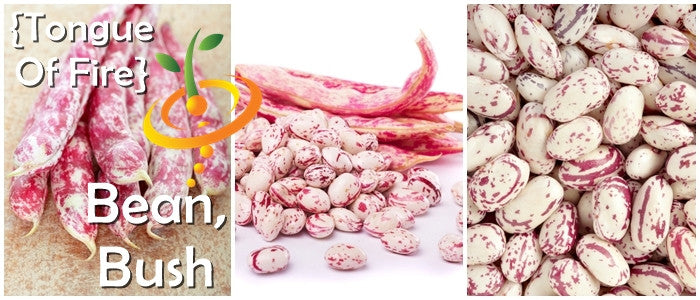
Not only does the Tongue of Fire Bush Bean have one of the best names for a vegetable, this Italian heirloom bean produces beautiful, flavorful wide cranberry streaked pods. Originally collected in Tierra del Fuego on the tip of South America, it produces 6"-7" long pods on a compact plant. Eat it young as a green bean, shell it when it matures, or let it dry and cook the large beans as you would kidney beans.
- Easy to grow
- High yielding
- Beautiful and delicious
- 6"-7" long pods
SEED PLANTING TIPS
- Botanical name: Phaseolus vulgaris
- Depth to plant seeds: 1" deep
- Spacing between plants: 4" apart
- Spacing between rows: 18"-24" apart
- Days to germinate (sprout): 5-10 days
- Germination soil temps: 70F-85F
- Soil needs: 6.0-7.0 pH
- Sun needs: Full sun
- Frost hardy: No
- Planting season: Spring, summer, fall
- # of plants per sq. ft.: Appx. 4 plants per sq. ft.
- Days to maturity: 55-90 days
Click here to view our full Bean grow guide
Good companion plants: Cucumber, Pea, Rosemary, Thyme, Tomato
- From $199 USDUnit price /Unavailable
Description
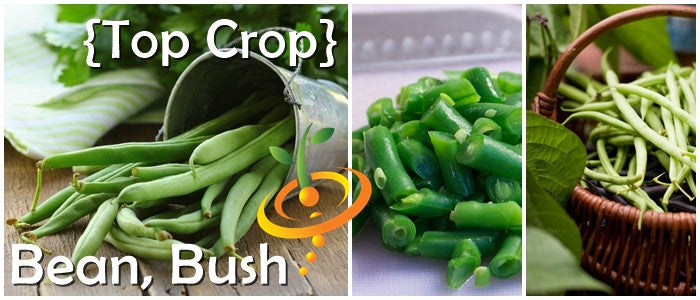
The Top Crop Bush Bean lives up to its name. This All-American Selections (AAS) winner produces high yields high up on a tall plant for easy harvesting. The 6"-7" pods are smooth, round, straight, and stringless, and they mature early in about 50 days. Also add heat tolerant to the list.
- Easy to grow
- Easy to harvest
- Heat tolerant
- Matures early—50 days
SEED PLANTING TIPS
- Botanical name: Phaseolus vulgaris
- Depth to plant seeds: 1" deep
- Spacing between plants: 4" apart
- Spacing between rows: 18"-24" apart
- Days to germinate (sprout): 5-10 days
- Germination soil temps: 70F-85F
- Soil needs: 6.0-7.0 pH
- Sun needs: Full sun
- Frost hardy: No
- Planting season: Spring, summer, fall
- # of plants per sq. ft.: Appx. 4 plants per sq. ft.
- Days to maturity: 50-55 days
Click here to view our full Bean grow guide
Good companion plants: Cucumber, Pea, Rosemary, Thyme, Tomato
- From $299 USDUnit price /Unavailable
Description
The Aguadulce Fava Bean is a cold hardy broadbean that can also take a bit of heat. This 4' bush-type plant produces charming white and black flowers that turn into huge green pods with huge, creamy, nutty, protein-rich beans inside. Known as a dried bean, it’s also delicious when eaten fresh from the pod. With its edible leaves, high yields, and nitrogen-fixing properties, this is a gorgeous performer for fall and winter gardens in all grow zones.
- Easy to grow
- Cold hardy to 20 degrees F
- Nitrogen fixer
- Great for winter gardens
SEED PLANTING TIPS
- Botanical name: Vicia faba
- Depth to plant seeds: 2" deep
- Spacing between plants: 4"-6" apart
- Spacing between rows: 18"-24" apart
- Days to germinate (sprout): 10-14 days
- Germination soil temps: 50F-65F
- Soil needs: 6.0-7.0 pH
- Sun needs: Full sun
- Frost hardy: Yes
- Planting season: Spring, fall, winter
- # of plants per sq. ft.: Appx. 2-4 plants per sq. ft.
- Days to maturity: 75-80 days when spring sown, 180 days when fall sown
Click here to view our full Bean grow guide
Good companion plants: Cabbage, Carrot, Lettuce, Parsley, Rosemary
Bean, Fava/Broad - Broad Windsor
From $299 USDUnit price /UnavailableDescription

Consumed around the world as a nutritious, protein-rich dried bean, The Broad Windsor Fava Bean is also tasty as a shell bean. This cold hardy bush-type plant grows to 3'-4' with unusual black and white blossoms. The huge beans have a creamy, nutty flavor, and the leaves can be eaten fresh or cooked. High yields make this nitrogen fixer a multi-tasker in the fall and winter gardens of all grow zones.
- Easy to grow
- Cold hardy to 20 degrees
- Nitrogen fixer
- Great for winter gardens
SEED PLANTING TIPS
- Botanical name: Vicia faba
- Depth to plant seeds: 2" deep
- Spacing between plants: 4"-6" apart
- Spacing between rows: 18"-24" apart
- Days to germinate (sprout): 10-14 days
- Germination soil temps: 50F-65F
- Soil needs: 6.0-7.0 pH
- Sun needs: Full sun
- Frost hardy: Yes
- Planting season: Spring, fall, winter
- # of plants per sq. ft.: Appx. 2-4 plants per sq. ft.
- Days to maturity: 75-80 days when spring sown, 180 days when fall sown
Click here to view our full Bean grow guide.
Good companion plants: Cabbage, Carrot, Lettuce, Parsley, Rosemary
- From $299 USDUnit price /Unavailable
Description

The Henderson Lima Bean is an old heirloom with a reputation for easy growth and high yields of small, but plump pods and beans. This is one bean that requires higher temperatures for best production. Raw beans are toxic, so enjoy its smooth, creamy, buttery flavor after cooking, either shelled or dried. This compact bush-type plant spreads wider than green beans, so give them room to grow.
- Easy to grow
- Bush growth habit
- Heat loving
- Superb flavor
SEED PLANTING TIPS
- Botanical name: Phaseolus lunatus
- Depth to plant seeds: 1.5" deep
- Spacing between plants: 6"-8" apart
- Spacing between rows: 24"-30" apart
- Days to germinate (sprout): 10-21 days
- Germination soil temps: 70F-90F
- Soil needs: 6.0-7.0 pH
- Sun needs: Full sun
- Frost hardy: No
- Planting season: Spring, summer, fall
- # of plants per sq. ft.: Appx. 2-4 plants per sq. ft.
- Days to maturity: 65-75 days
Click here to view our full Bean grow guide.
Good companion plants: Cucumber, Pea, Rosemary, Thyme, Tomato
- From $299 USDUnit price /Unavailable
Description
View all bean seeds
The Thorogreen Lima Bean is a high-yielding heirloom that loves higher temperatures. Plump, light green pods grow at the top of a compact plant for easy harvesting. Both fresh and dried beans have a smooth, buttery flavor. When eating fresh, be sure to cook them, as raw beans are toxic. This compact bush-type plant spreads wider than green beans, so give them room to grow.
- Easy to grow
- Bush growth habit
- Heat loving
- Early producer
SEED PLANTING TIPS
- Botanical name: Phaseolus lunatus
- Depth to plant seeds: 1.5" deep
- Spacing between plants: 6"-8" apart
- Spacing between rows: 24"-30" apart
- Days to germinate (sprout): 10-21 days
- Germination soil temps: 70F-90F
- Soil needs: 6.0-7.0 pH
- Sun needs: Full sun
- Frost hardy: No
- Planting season: Spring, summer, fall
- # of plants per sq. ft.: Appx. 2-4 plants per sq. ft.
- Days to maturity: 65-75 days
Click here to view our full Bean grow guide
Good companion plants: Cucumber, Pea, Rosemary, Thyme, Tomato
Bean, Lima/Pole - King of the Garden
From $399 USDUnit price /UnavailableDescription

With a name like King of the Garden Lima Bean, you can expect great things. This pole bean produces prolific yields of 7" pods full of large white lima beans with sweet, smooth flavor. Vines can grow 9'-10' high. Will continue to blossom and produce throughout the hot summer months. Cook them before you eat them fresh, as raw lima beans are toxic.
- Easy to grow
- Prolific producer
- Heat loving
- Sweet flavor
SEED PLANTING TIPS
- Botanical name: Phaseolus lunatus
- Depth to plant seeds: 1.5" deep
- Spacing between plants: 4"-5" apart
- Spacing between rows: 24"-30" apart
- Days to germinate (sprout): 10-21 days
- Germination soil temps: 70F-90F
- Soil needs: 6.0-7.0 pH
- Sun needs: Full sun
- Frost hardy: No
- Planting season: Spring, summer
- # of plants per sq. ft.: Appx. 4-6 plants per sq. ft.
- Days to maturity: 85-95 days
Click here to view our full Bean grow guide
Good companion plants: Cucumber, Pea, Rosemary, Thyme, Tomato
Bean, Pole - Asparagus Yard-Long
From $199 USDUnit price /UnavailableDescription
The Red-Seeded Asparagus Yard-Long Pole Bean says it all—very long asparagus-green and -flavored pods with red beans inside, except it grows to only half its claim. Also called Snake Bean or Chinese Long Bean, but why use half the words, too? Thank goodness it’s stringless, or you’d spend all day stringing pods in the heat that it loves. Vigorous vines can grow to 12'. For best umami flavor, harvest when 8"-12" long and the width of a pencil.
- Easy to grow
- Stringless variety
- Heat loving
- Umami flavor
SEED PLANTING TIPS
- Botanical name: Phaseolus vulgaris
- Depth to plant seeds: 1" deep
- Spacing between plants: 5" apart
- Spacing between rows: 18"-24" apart
- Days to germinate (sprout): 8-14 days
- Germination soil temps: 70F-90F
- Soil needs: 6.0-7.0 pH
- Sun needs: Full sun
- Frost hardy: No
- Planting season: Spring, summer
- # of plants per sq. ft.: Appx. 4 plants per sq. ft.
- Days to maturity: 75-85 days
Click here to view our full Bean grow guide
Good companion plants: Cucumber, Pea, Rosemary, Thyme, Tomato
Bean, Pole - Kentucky Wonder, Brown
From $299 USDUnit price /UnavailableDescription

The Kentucky Wonder Brown-Seeded Pole Bean is a reliable and heavy yielder. This vigorous vining plant produces bright green, stringless 8" pods with flavorful brown beans inside. Wondering if you can get flavorful white beans inside? Yes, you can. Quick to start producing, and will continue to set blooms and beans until frost.
- Easy to grow
- Long 8" pods
- Quick to produce
- Long growing season
SEED PLANTING TIPS
- Botanical name: Phaseolus vulgaris
- Depth to plant seeds: 1" deep
- Spacing between plants: 5" apart
- Spacing between rows: 18"-24" apart
- Days to germinate (sprout): 8-14 days
- Germination soil temps: 70F-90F
- Soil needs: 6.0-7.0 pH
- Sun needs: Full sun
- Frost hardy: No
- Planting season: Spring, summer
- # of plants per sq. ft.: Appx. 4 plants per sq. ft.
- Days to maturity: 75-85 days
Click here to view our full Bean grow guide
Good companion plants: Cucumber, Pea, Rosemary, Thyme, Tomato
Bean, Pole - Kentucky Wonder, White
From $149 USDUnit price /UnavailableDescription

The Kentucky Wonder White-Seeded Pole Bean is one of the oldest and most widely enjoyed bean varieties ever grown. It produces reliably heavy yields of 6"-8" long green pods with white beans inside. If you prefer brown beans, we sell those too. These stringless beans grow high off the ground for easy harvesting.
- Easy to grow
- Prolific producer
- Long pods up to 8"
- Stringless variety
SEED PLANTING TIPS
- Botanical name: Phaseolus vulgaris
- Depth to plant seeds: 1" deep
- Spacing between plants: 4" apart
- Spacing between rows: 18"-24" apart
- Days to germinate (sprout): 5-10 days
- Germination soil temps: 70F-85F
- Soil needs: 6.0-7.0 pH
- Sun needs: Full sun
- Frost hardy: No
- Planting season: Spring, summer, fall
- # of plants per sq. ft.: Appx. 4 plants per sq. ft.
- Days to maturity: 55-60
Click here to view our full Bean grow guide
Good companion plants: Cucumber, Pea, Rosemary, Thyme, Tomato
- From $199 USDUnit price /Unavailable
Description
The Purple Podded Pole Bean produces a profuse plurality of purely purple pods. View this variety vegetate vigorous verdant vines with violet developments. Stringless shells surround savory seeds.
- Easy to grow
- High yielding
- Long pods up to 7"
- Easy to harvest
SEED PLANTING TIPS
- Botanical name: Phaseolus vulgaris
- Depth to plant seeds: 1" deep
- Spacing between plants: 5" apart
- Spacing between rows: 18"-24" apart
- Days to germinate (sprout): 8-14 days
- Germination soil temps: 70F-85F
- Soil needs: 6.0-7.0 pH
- Sun needs: Full sun
- Frost hardy: No
- Planting season: Spring, summer
- # of plants per sq. ft.: Appx. 4 plants per sq. ft.
- Days to maturity: 70-75 days
Click here to view our full Bean grow guide
Good companion plants: Cucumber, Pea, Rosemary, Thyme, Tomato
- From $399 USDUnit price /Unavailable
Description
The Rattlesnake Pole Bean is as delicious as it is beautiful. Long purple-and-green streaked pods dangle from strong 10' vines, with streaked beige beans inside. Like its namesnake, it’s not bothered by heat, humidity, or drought. If you hear it rattle, it has probably dried on the vine. Grow alongside other streaked beans, like Tongue of Fire and Borlotti.
- Easy to grow
- Heat tolerant
- Long pods up to 8"-10”
- Eat fresh or dried
SEED PLANTING TIPS
- Botanical name: Phaseolus vulgaris
- Depth to plant seeds: 1" deep
- Spacing between plants: 5" apart
- Spacing between rows: 18"-24" apart
- Days to germinate (sprout): 8-14 days
- Germination soil temps: 70F-85F
- Soil needs: 6.0-7.0 pH
- Sun needs: Full sun
- Frost hardy: No
- Planting season: Spring, summer
- # of plants per sq. ft.: Appx. 4 plants per sq. ft.
- Days to maturity: 70-75 days
Click here to view our full Bean grow guide
Good companion plants: Cucumber, Pea, Rosemary, Thyme, Tomato
- From $099 USDUnit price /Unavailable
Description

The Romano Pole Bean is a traditional Italian heirloom bean enjoyed by generations of gardeners. The vining plant produces high yields of flat, wide, stringless 6" pods that taste best when harvested young. Just a great all-around green bean.
- Easy to grow
- Stringless variety
- Harvest young for best flavor
- Vining plant requires staking
SEED PLANTING TIPS
- Botanical name: Phaseolus vulgaris
- Depth to plant seeds: 1" deep
- Spacing between plants: 5" apart
- Spacing between rows: 18"-24" apart
- Days to germinate (sprout): 8-14 days
- Germination soil temps: 70F-85F
- Soil needs: 6.0-7.0 pH
- Sun needs: Full sun
- Frost hardy: No
- Planting season: Spring, summer, fall
- # of plants per sq. ft.: Appx. 4 plants per sq. ft.
- Days to maturity: 65-80 days
Click here to view our full Bean grow guide
Good companion plants: Cucumber, Pea, Rosemary, Thyme, Tomato
Bean, Runner/Pole - Prizewinner
From $199 USDUnit price /UnavailableDescription

The Prizewinner Runner Pole Bean produces a blue-ribbon show of crimson blossoms that transform into succulent, flavorful foot-long pods with speckled purple-red beans inside. Pick young for snap beans and mature for shell beans, or give them more time on stage and use them dried. A prolific producer that will win first, second, and third prize in your garden.- Easy to grow
- High yields
- Long pods up to 12"
- Eat fresh, shelled, or dried
SEED PLANTING TIPS
- Botanical name: Phaseolus coccineus
- Depth to plant seeds: 1" deep
- Spacing between plants: 5" apart
- Spacing between rows: 18"-24" apart
- Days to germinate (sprout): 8-14 days
- Germination soil temps: 70F-85F
- Soil needs: 6.0-7.0 pH
- Sun needs: Full sun
- Frost hardy: No
- Planting season: Spring, summer
- # of plants per sq. ft.: Appx. 4 plants per sq. ft.
- Days to maturity: 80-115 days
Click here to view our full Bean grow guide.
Good companion plants: Cucumber, Pea, Rosemary, Thyme, Tomato
Shop more:
BUSH BEANS
FAVA & BROAD BEANS
LIMA BEANS
POLE BEANS
Bean, Runner/Pole - Scarlet Runner
From $299 USDUnit price /UnavailableDescription

The Scarlet Runner Pole Bean is just about as traditional a vegetable you can grow in your garden. Named for its showy red hummingbird attractors (flowers) it puts out on 6'-8' vines that will grow on fences, trellises, and yes, poles. This high-yielding runner bean produces foot-long pods with speckled red-purple beans, but pick them sooner for best flavor. Tolerates heat and drought, and doesn’t mind cool nights.
- Easy to grow
- Heat tolerant
- Long pods up to 8"-12”
- Eat fresh, shelled, or dried
SEED PLANTING TIPS
- Botanical name: Phaseolus coccineus
- Depth to plant seeds: 1" deep
- Spacing between plants: 5" apart
- Spacing between rows: 18"-24" apart
- Days to germinate (sprout): 8-14 days
- Germination soil temps: 70F-85F
- Soil needs: 6.0-7.0 pH
- Sun needs: Full sun
- Frost hardy: No
- Planting season: Spring, summer
- # of plants per sq. ft.: Appx. 4 plants per sq. ft.
- Days to maturity: 65-75 days
Click here to view our full Bean grow guide
Good companion plants: Cucumber, Pea, Rosemary, Thyme, Tomato
Bean, Runner/Pole - White Emergo
From $099 USDUnit price /UnavailableDescription
The White Emergo Runner Pole Bean twinkles with lots of sweet white flowers, which may be why it’s also known as Sweet White Runner Bean. Vigorous vines can grow to 10' to support long 8"-12" pods with creamy white beans inside. Pick young for snap beans and mature for shell beans, or let them dry for a bean similar to cannellini.
- Easy to grow
- Tasty white beans
- Long pods up to 8"-12”
- Eat fresh, shelled, or dried
SEED PLANTING TIPS
- Botanical name: Phaseolus coccineus
- Depth to plant seeds: 1" deep
- Spacing between plants: 5" apart
- Spacing between rows: 18"-24" apart
- Days to germinate (sprout): 8-14 days
- Germination soil temps: 70F-85F
- Soil needs: 6.0-7.0 pH
- Sun needs: Full sun
- Frost hardy: No
- Planting season: Spring, summer
- # of plants per sq. ft.: Appx. 4 plants per sq. ft.
- Days to maturity: 80-115 days
Click here to view our full Bean grow guide
Good companion plants: Cucumber, Pea, Rosemary, Thyme, Tomato
Black Salsify (Black Oyster Plant/Scorzonera)
From $499 USDUnit price /UnavailableDescription
Black Salsify, also called Scorzonera and Black Oyster Plant, is a cold hardy perennial in the aster and lettuce family grown for its thin root with rough black skin over white flesh that can grow 1'-3' long if it has the room. Take care when harvesting, as the roots are delicate and snap easily. Any root left behind will re-grow!
It would be fun for a blind taste test, as the edible yellow dandelion-like flower petals smell like cocoa, the edible flower buds taste like okra, and the roots taste like oyster, asparagus, or artichoke, turning sweeter and earthier after a frost.
The stems and long, wide leaves that can grow 3'-4' tall are also edible. Delicious roasted, mashed, grilled, and pickled, or simply sautéed in a little butter for a rich, unusual side dish.
- Sweet, earthy flavor
- Roots can grow 1'-3' long if they have the room!
- Prefers cooler weather
- All parts are edible
- Cold hardy
SEED PLANTING TIPS
- Botanical name: Scorzonera hispanica
- Life cycle: Herbaceous perennial
- Hardiness zones: 5-9
- Planting season: Spring, fall
- Days to maturity: 100-120 days
- Depth to plant seeds: 1/2" deep
- Days to germinate (sprout): 7-28 days
- Germination soil temps: 60F-75F
- Spacing between plants: 3"-4" apart
- Spacing between rows: 18"-24" apart
- # of plants per sq. ft.: Appx. 16 plants per sq. ft.
- Soil types: Sandy, loamy, moist, well-drained
- Soil pH: 6.5-7.0
- Sun needs: Full sun
- Water needs: Average
- Cold stratify: No
- Frost tolerant: Yes
- Heat tolerant: Yes
- Drought tolerant: Yes
- Deer resistant: No
- Culinary use: Yes
Good Companion Plants: Beet, Carrot, Kohlrabi, Parsnip, Potato, Rosemary, Rutabaga, Sage, Thyme, Turnip
⚠️ Always consult with your doctor and primary care provider before using or consuming herbs, flowers, seeds and/or plants for medicinal purposes.
- From $399 USDUnit price /Unavailable
Description

- This popular broccoli variety produces a short, 24 inch plant with medium-large heads. Withstands cold well. Best used for a fall crop.
- Extremely flavorful heads of broccoli.
- ‘Calabrese’ is an old Italian heirloom variety that sprouts side shoots that will mature for harvesting.
-
Once the main head is cut off the plant will continuously produce many broccoli shoots during the season
-
Days to Maturity | 65 days
- Broccoli is high in vitamin C, as well as dietary fiber; it also contains multiple nutrients with potent anti-cancer properties, such as diindolylmethane and small amounts of selenium. A single serving provides more than 30 mg of Vitamin C and a half-cup provides 52 mg of Vitamin C.
- This popular broccoli variety produces a short, 24 inch plant with medium-large heads. Withstands cold well. Best used for a fall crop.
- From $399 USDUnit price /Unavailable
Description

- This variety of Broccoli produces tightly packed, blue/green flower heads on strong short stems.
- Can be picked regularly and new shoots will continue to grow!
- This is one of the more popular Broccoli varieties available.
-
Days to Maturity | 65 days
- Broccoli is high in vitamin C, as well as dietary fiber; it also contains multiple nutrients with potent anti-cancer properties, such as diindolylmethane and small amounts of selenium. A single serving provides more than 30 mg of Vitamin C and a half-cup provides 52 mg of Vitamin C.
- This variety of Broccoli produces tightly packed, blue/green flower heads on strong short stems.
- From $499 USDUnit price /Unavailable
Description

- The Early Purple Broccoli Plant produces extremely flavorful heads of broccoli that are bright purple.
- Ideal for garnishes or used fresh in salads and other gourmet culinary creations.
- Once the main head is removed this variety will continuously produce many offshoots during the season.
- Can be planted late winter and early spring.
- An extremely easy to grow variety that can withstand cold temps.
-
Days to Maturity | 65 days
-
Broccoli Seeds | Start seed indoors 6 weeks before the last killing frost, for early spring crop. Plant in rows 2 1/2 feet apart, with 18 inches to 2 feet between the plants.
- Broccoli is high in vitamin C, as well as dietary fiber; it also contains multiple nutrients with potent anti-cancer properties, such as diindolylmethane and small amounts of selenium. A single serving provides more than 30 mg of Vitamin C and a half-cup provides 52 mg of Vitamin C.
- The Early Purple Broccoli Plant produces extremely flavorful heads of broccoli that are bright purple.
- From $499 USDUnit price /Unavailable
Description

- The Rapini (raab) broccoli produces excellent yields of large dark green broccoli raab.
- It has no central head like regular broccoli, but instead has side broccoli shoots.
- Excellent for stir fry, salads, and many other culinary creations.
- Extremely healthy with tons of health benefits: high in vitamin A and C. It's said to be very good for your heart.
-
Plant early in the spring and harvest before the weather gets too hot.
-
Days to Maturity | 65 days
- The Rapini (raab) broccoli produces excellent yields of large dark green broccoli raab.
- From $499 USDUnit price /Unavailable
Description

-
Old italian heirloom variety that produces excellent yields of beautifully unique green broccoli heads.
- This is a unique Italian variety with better taste and texture than other broccoli.
- It has beautiful apple green spiraling buds and is especially well adapted to the north.
- A heirloom variety from Italy.
-
Days to Maturity | 75 days
- Broccoli is high in vitamin C, as well as dietary fiber; it also contains multiple nutrients with potent anti-cancer properties, such as diindolylmethane and small amounts of selenium. A single serving provides more than 30 mg of Vitamin C and a half-cup provides 52 mg of Vitamin C.
-
Old italian heirloom variety that produces excellent yields of beautifully unique green broccoli heads.
- From $399 USDUnit price /Unavailable
Description

- This popular broccoli variety produces a short, 24 inch plant with medium-large heads.
- Withstands cold extremely well.
- Best grows for a fall crop.
-
Days to Maturity | 85 days
- Broccoli is high in vitamin C, as well as dietary fiber; it also contains multiple nutrients with potent anti-cancer properties, such as diindolylmethane and small amounts of selenium. A single serving provides more than 30 mg of Vitamin C and a half-cup provides 52 mg of Vitamin C.
- This popular broccoli variety produces a short, 24 inch plant with medium-large heads.
Brussels Sprouts - Long Island Catskill
From $399 USDUnit price /UnavailableDescription

- Brussels sprouts have shallow roots, so as they become top heavy, you may need to stake them, particularly if exposed to strong winds.
- As with other brassicas, Brussels Sprouts are susceptible to pests and diseases that must be kept under control early in the season. As with other brassicas, composting roots should be avoided.
- Brussels Sprouts should not be grown within a 10 foot radius of any brassica growing location within the last 3 years, preferably 7 years.
- Brussels Sprouts are high in calcium and iron, as well as a good source of vitamins A and C.
- This popular Brussels Sprout variety produces miniature cabbage-like heads which are extremely tasty and nutritious.
-
Days to Maturity | 90-120 days
- Brussel Sprouts | Start seed indoors in early May so plants are ready to set out in June or early July. The sprouts develop best in cool weather. Plant in rows 3 feet apart, with 30 inches between the plants.
Additional Details
Brussels sprouts contain sulforaphane, a chemical believed to have potent anti-cancer properties. Although boiling reduces the level of the anti-cancer compounds, steaming, microwaving, and stirring.
Good Companion Plants for Brussels Sprouts 📚 Grow Guide: Brussels Sprouts - Brussels sprouts have shallow roots, so as they become top heavy, you may need to stake them, particularly if exposed to strong winds.

✨ YOU MAY ALSO LIKE
View all⭐ FEATURED COLLECTIONS
View all seeds listed A-Zcontinue shopping
















































































































































































































